In this Article
Toggle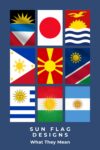



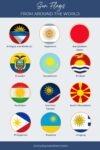
While many national flags feature stars and stripes, only a handful of the world’s 195 countries incorporate a sun into the design. Although the sun has different symbolic meanings, the most common include life, strength, and power. Here are some of the best-known sun flags from around the world.
When you gaze into the night sky anywhere in the world, it’s easy to be mesmerized by the many beautiful stars twinkling above. But life on earth would not exist without the most important star in the heavens, the sun. So, I find it ironic that roughly 60 countries have flags featuring stars while only a few use the sun as a design element.
When a country uses a sun symbol in its flag, it may be yellow, red, or white. Designers may take a straightforward approach, depicting it as a simple, perfect circle, or they may add rays of sunlight bursting from it like spikes on a tiara. These are the intriguing meanings of the most notable sun flags around the world.
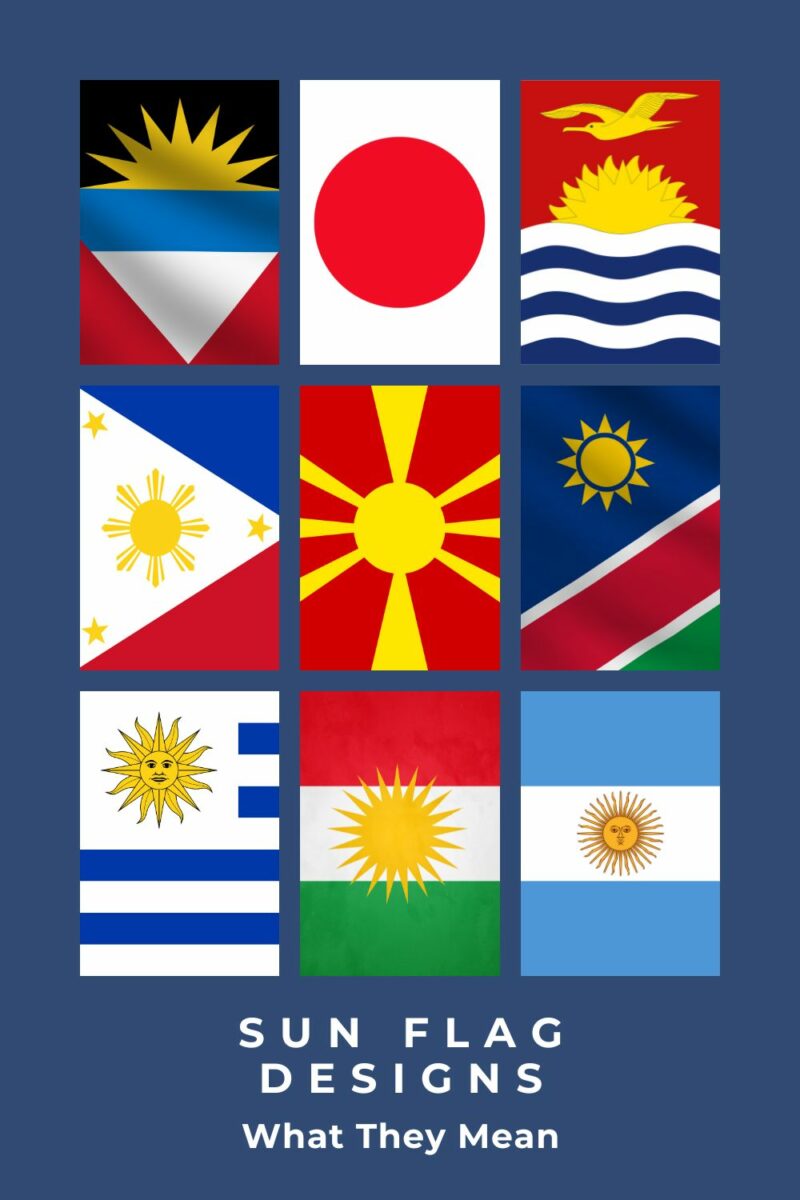
To help offset the costs of running EverydayWanderer.com, you’ll find affiliate links lightly sprinkled throughout the site. If you choose to make a purchase via one of these links, there’s no additional cost to you, but I’ll earn a teeny tiny commission. You can read all of the legal blah blah blah (as my little niece says) on the full disclosure page.
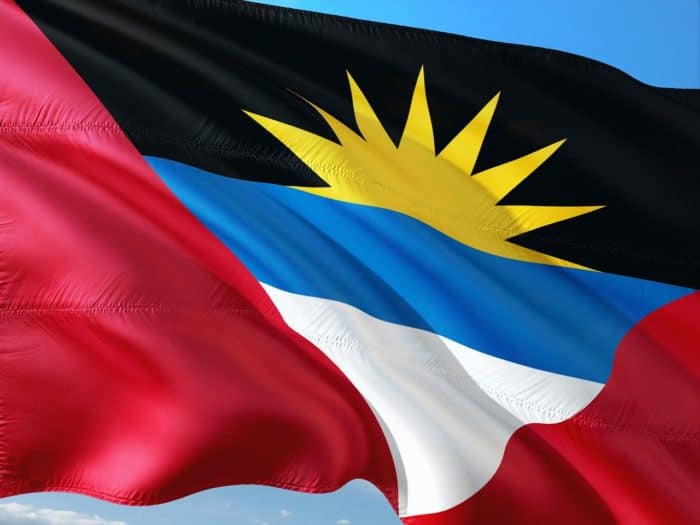
Antigua and Barbuda
A rising sun in a “V” for victory
One of the most prominent features of the Antigua and Barbuda flag is a v-shape that cuts into a red banner. The red hue represents the people’s energy, and the “v” shape celebrates the nation’s independence gained in 1981.
Filling the center of the “v” are white, blue, and black ribbons with a yellow sun rising on the horizon. White represents the sandy beaches of this Caribbean island nation, blue signifies hope, and black represents African ancestry.

Argentina
Light blue and white triband flag with a Sun of May
Argentina’s flag features light blue and white stripes, with the light blue chosen in 1812 by Manuel Belgrano, who led the nation’s fight for independence from Spain. In the center is the Sun of May, a sun symbol with a face that represents the May revolution leading to Argentina’s independence in 1810. It is a national symbol in both Argentina and Uruguay, Argentina’s neighbor to the east.
There is some debate over what the stripes symbolize on the Argentinian flag. Some say the light blue and white stripes represent the sky and clouds above Argentina. Others say the blue stripes stand for not just the brilliant blue sky but also the waters of Argentina’s Rio de la Plata or the shade of blue used in the Spanish House of Bourbon in its coat of arms. In addition to possibly representing the clouds, the white stripe may symbolize the country’s silver mines. In fact, the country was named after the Latin word for silver, argentinum, by Spanish conquistadors.
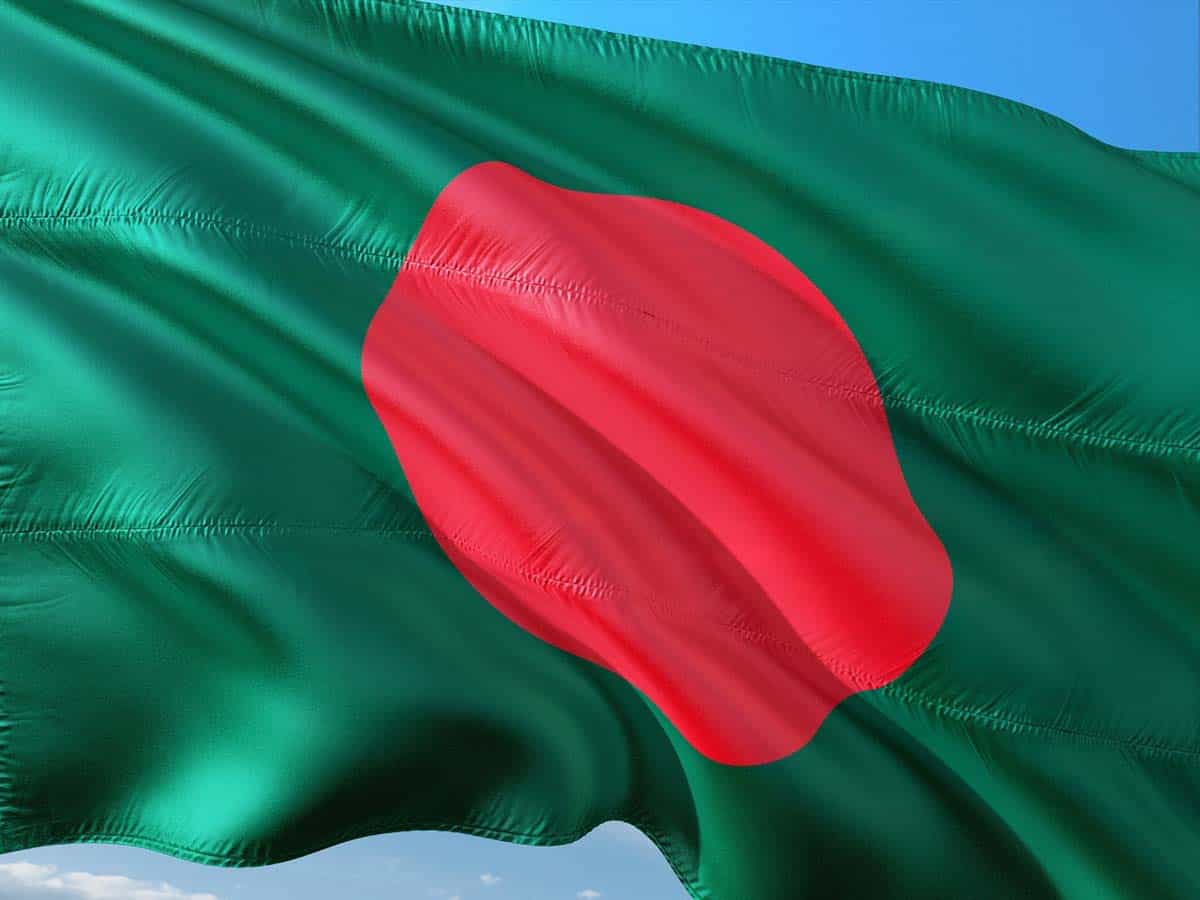
Bangladesh
Green flag with a red sun
Bangladesh’s green flag features a red sun offset slightly towards the pole. Designers positioned it here so the sun appears centered when the flag is flying in the wind. There is some debate over the meaning behind the red sun. Some say it represents the rising sun over Bangladesh, while others say it is for the bloodshed in the 1971 independence war against Pakistan. Others say it shows the sun setting over the legendary Battle of Karbala.
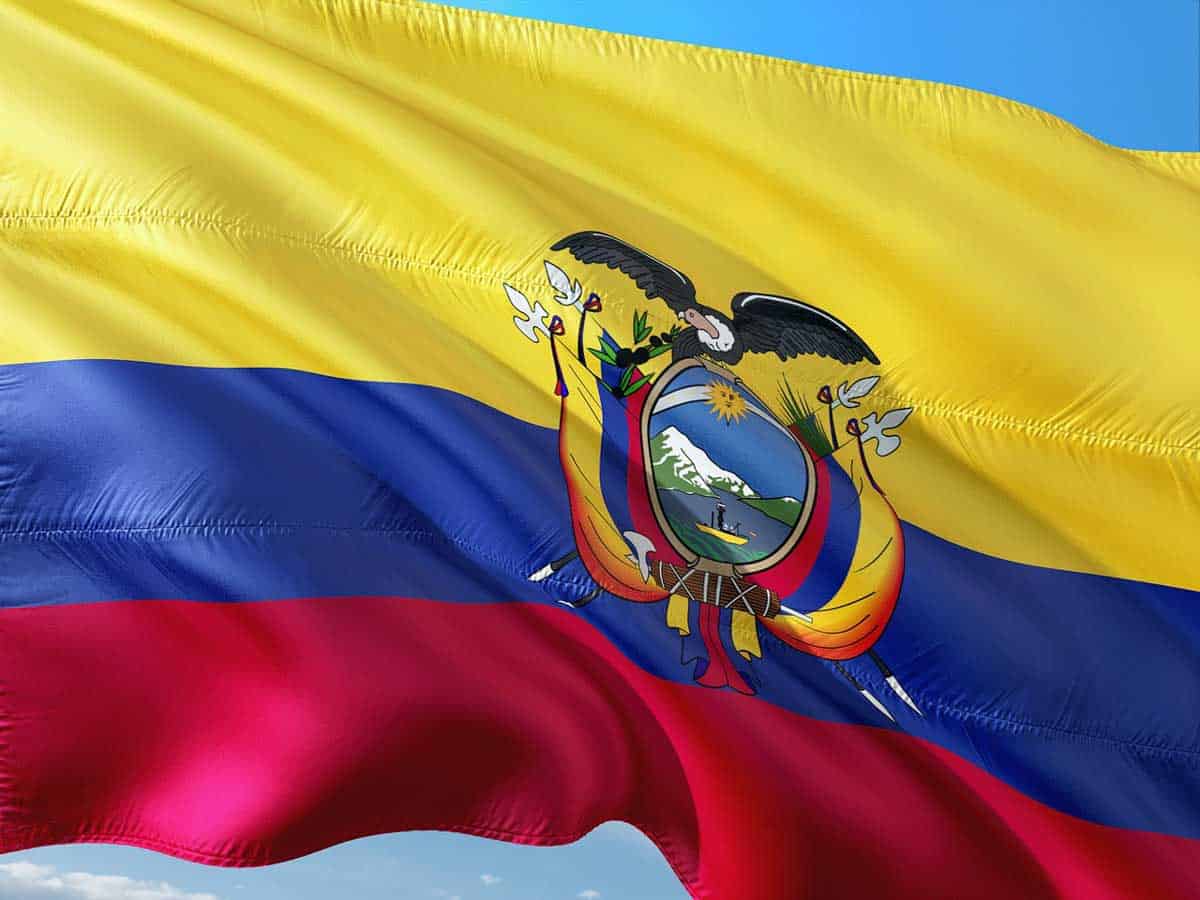
Ecuador
Sun incorporated into a coat of arms on yellow, blue, and red stripes
Unlike the simplicity of most sun flags, there is a lot to unpack in the Ecuador flag. In the center, a sun shines brightly over the Chimborazo Mountain in an egg-shaped design held in the talons of a condor.

Japan
Red sun on a white background
Japan is known as the “Land of the Rising Sun.” The nation’s flag is known as Nisshoki (rising sun flag) or Hinomaru (the sun disk). The perfect crimson circle in the center of a white banner is a nod to Amaterasu Omikami, the sun goddess and most important deity of the Shinto religion. She is considered the mythical founder of Japan and the ancestor of the nation’s emperors.
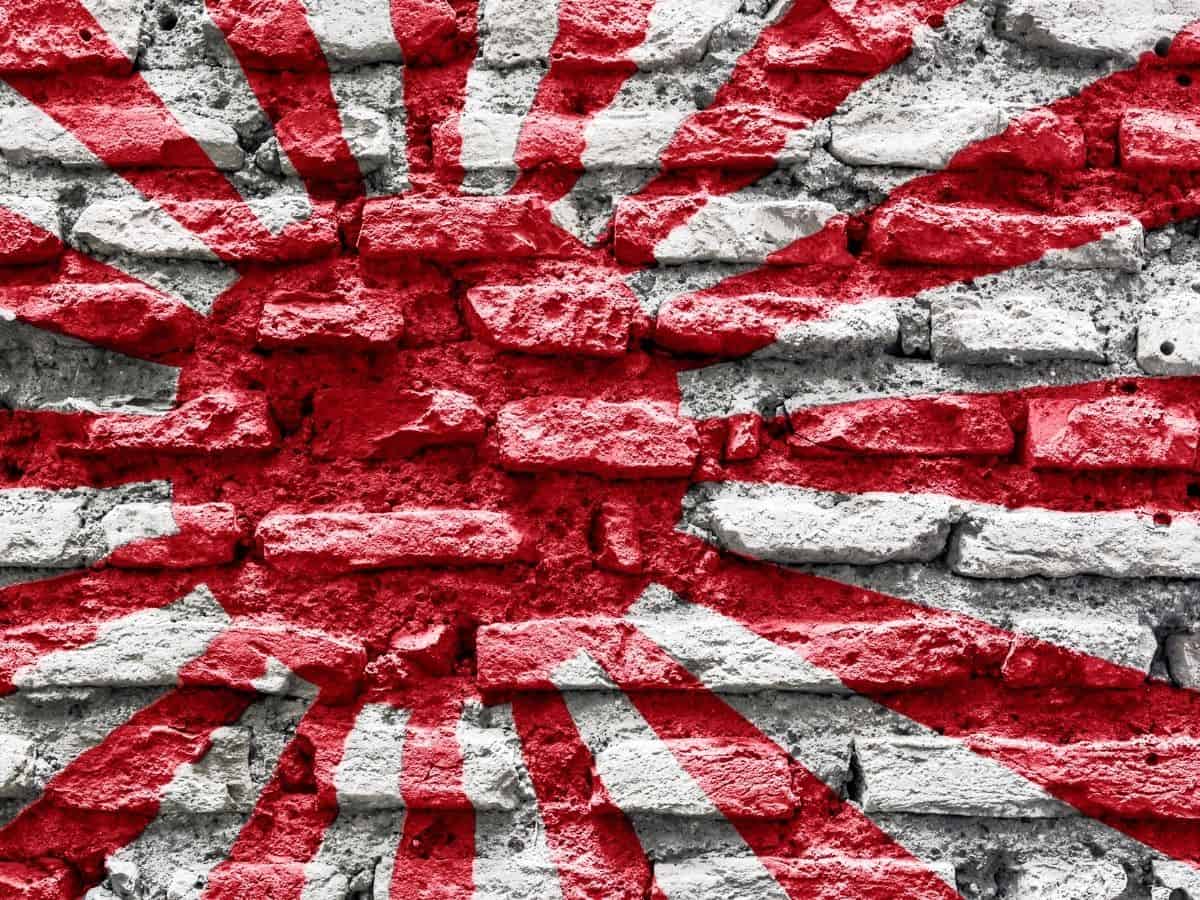
A Second Japanese Flag with a Rising Sun
There is a second rising sun flag associated with Japan. Known as Kyokujitsuki, with 16 rays extending from a red disc, this military flag has represented the Japan Maritime Self-Defense Force since 1954. However, some people have compared this sun flag to the Nazi swastika. Why is the rising sun flag offensive? On the Asian continent, especially in South Korea, the flag is a reminder of wartime atrocity, causing some to push for a ban on the rising sun flag.
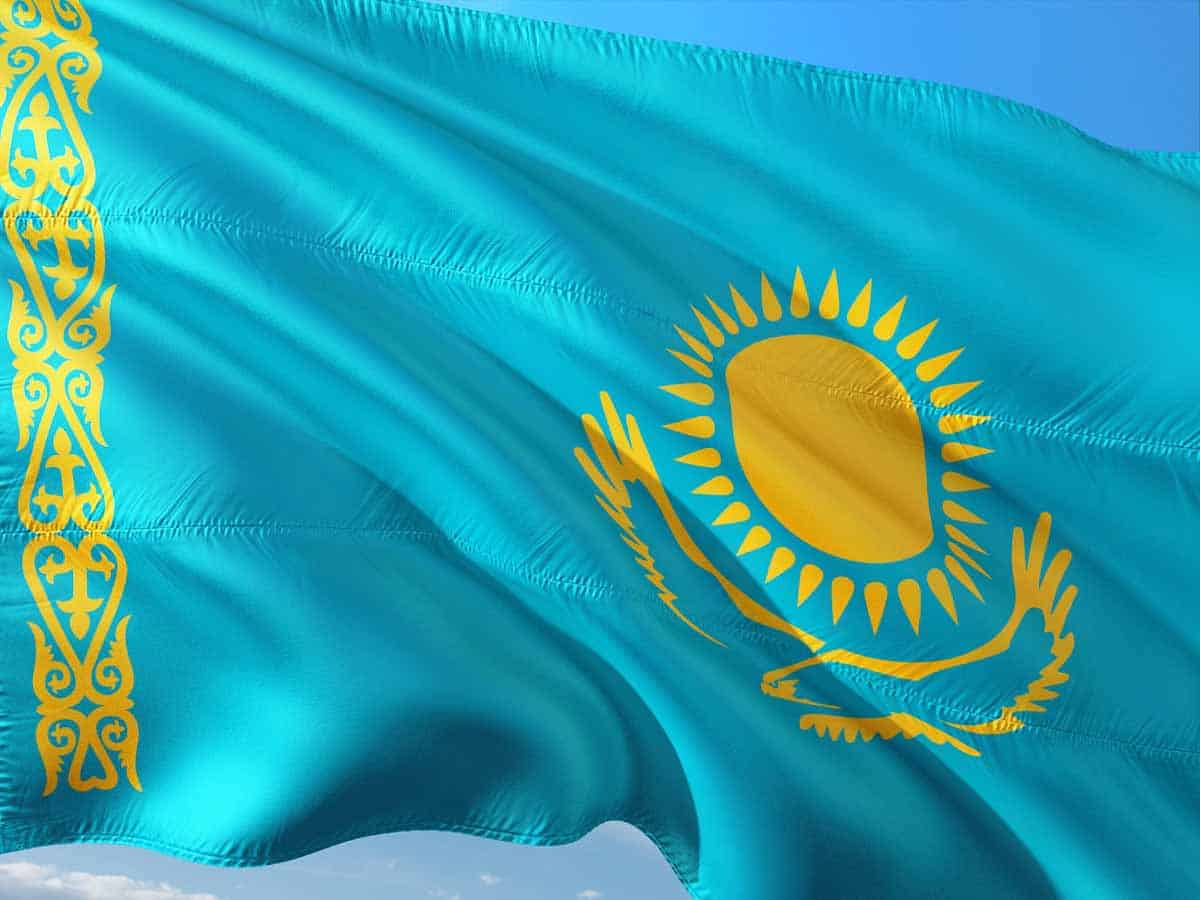
Kazakhstan
Turquoise flag with a yellow sun of grain-shaped rays
On Kazakhstan’s turquoise flag, the yellow sun with 32 grain-shaped rays emanating from a circle. The Kazakh people will tell you that it symbolizes life, energy, and the nation’s important wheat industry. A golden eagle spreads its wings beneath the sun, and a vertical “koshkar-muiz” (the horns of the ram) runs parallel to the flagpole when the flag flies over Kazakhstan.

Kiribati
Partial sun of 17 rays over ocean waves
Kiribati’s flag depicts a golden sun peeking over the horizon line of wavy blue and white stripes representing the Pacific Ocean. The elegantly stylized sun features 17 rays, signifying the nation’s 17 islands and atolls. For this remote island territory isolated in the vast ocean, the rising or setting sun motif captures the geographic reality and daily rhythm of life.
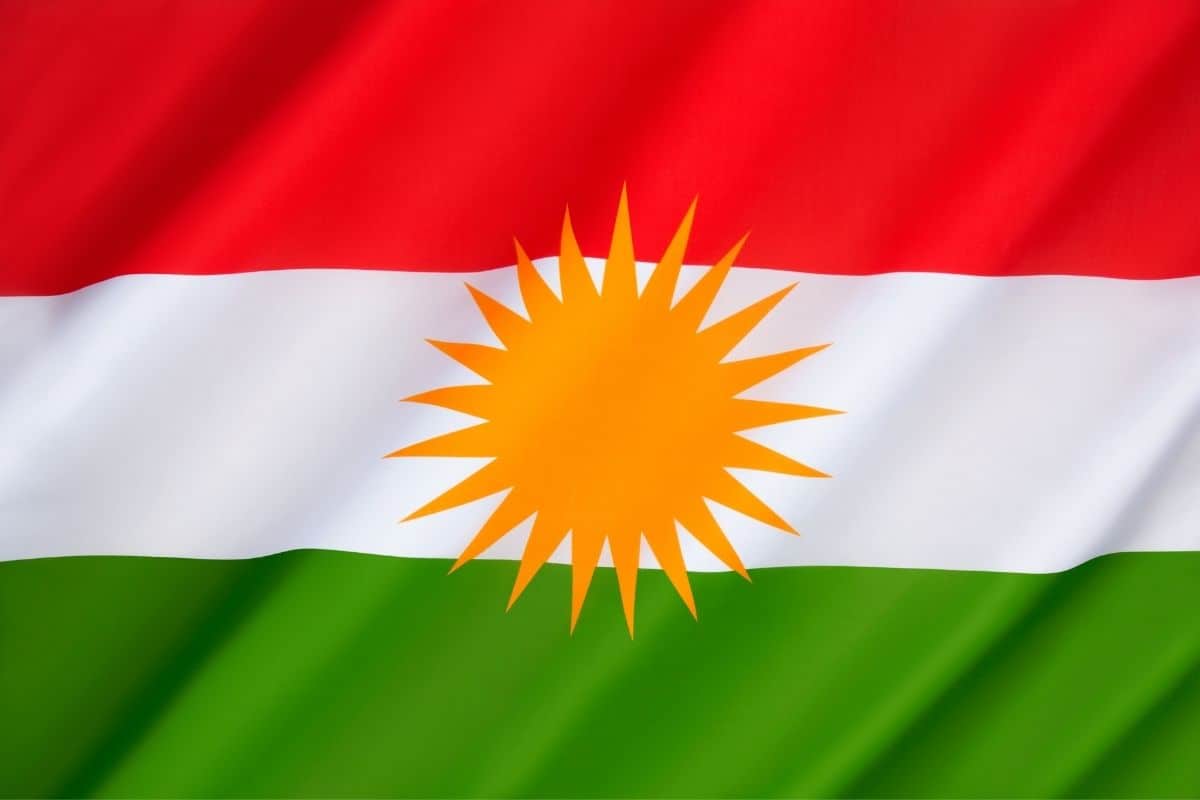
Kurdistan
Red, white, and green striped flag with sun in middle
The widely-used Kurdish flag features a golden sun known as Roj. It has 21 triangular rays centered on horizontal stripes of red, white, and green. While not an official national flag, this ancient sun symbol represents the life-giving source of light for the Kurdish ethnic identity spread across Turkey, Iran, Iraq, and Syria. With no sovereign Kurdish state, this sun emblem has become an important unifying banner for the Kurds.
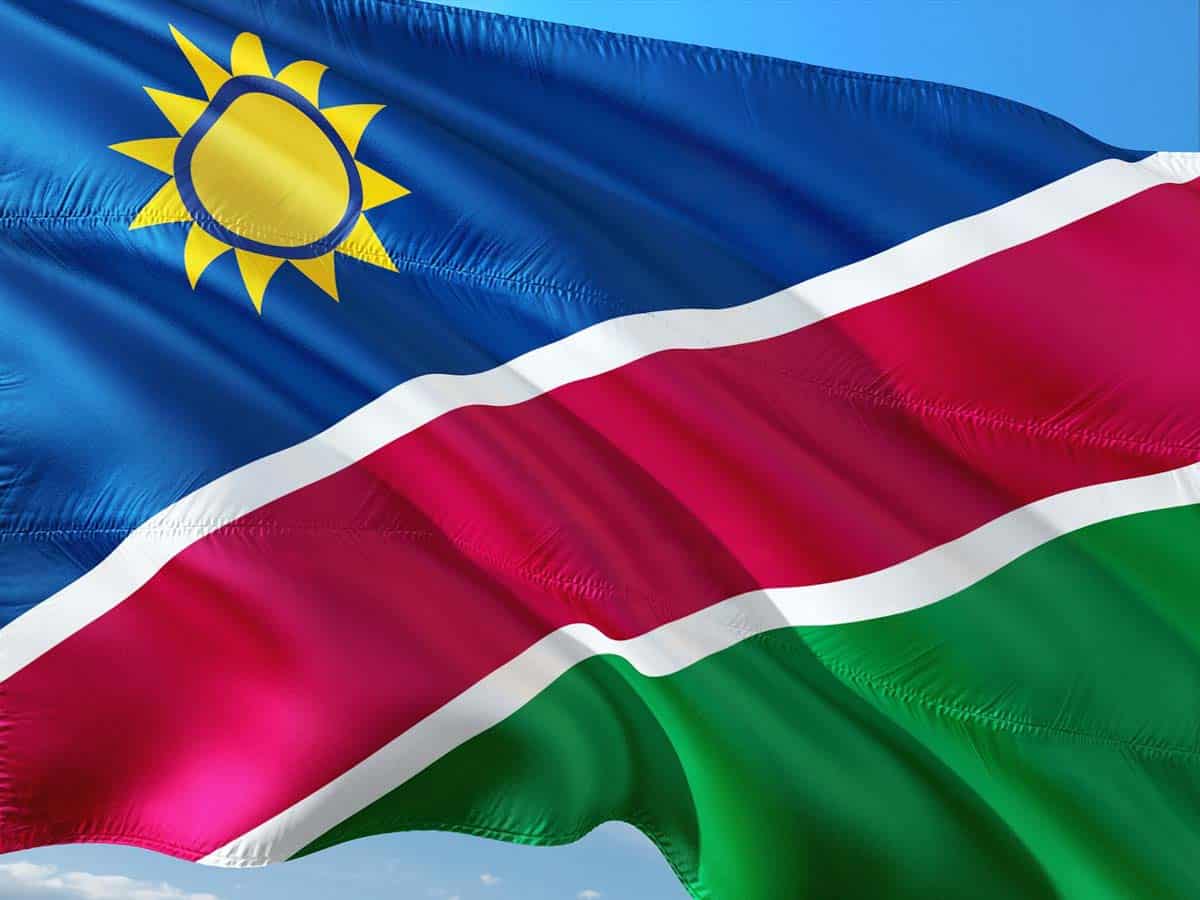
Namibia
Sun in a blue corner on diagonal stripes
Unlike the other sun flags, which incorporate horizontal bands or wavy stripes into their designs, Namibia’s flag stripes are diagonal. It has a golden sun with 12 pointed ray triangles set in the corner, representing the life-giving light and energy of a relatively new African nation established in 1990. The red symbolizes the nation’s desire for unity and heroic liberation struggle, flanked by white bands of peace, while the green is a nod to vegetation and harvest.
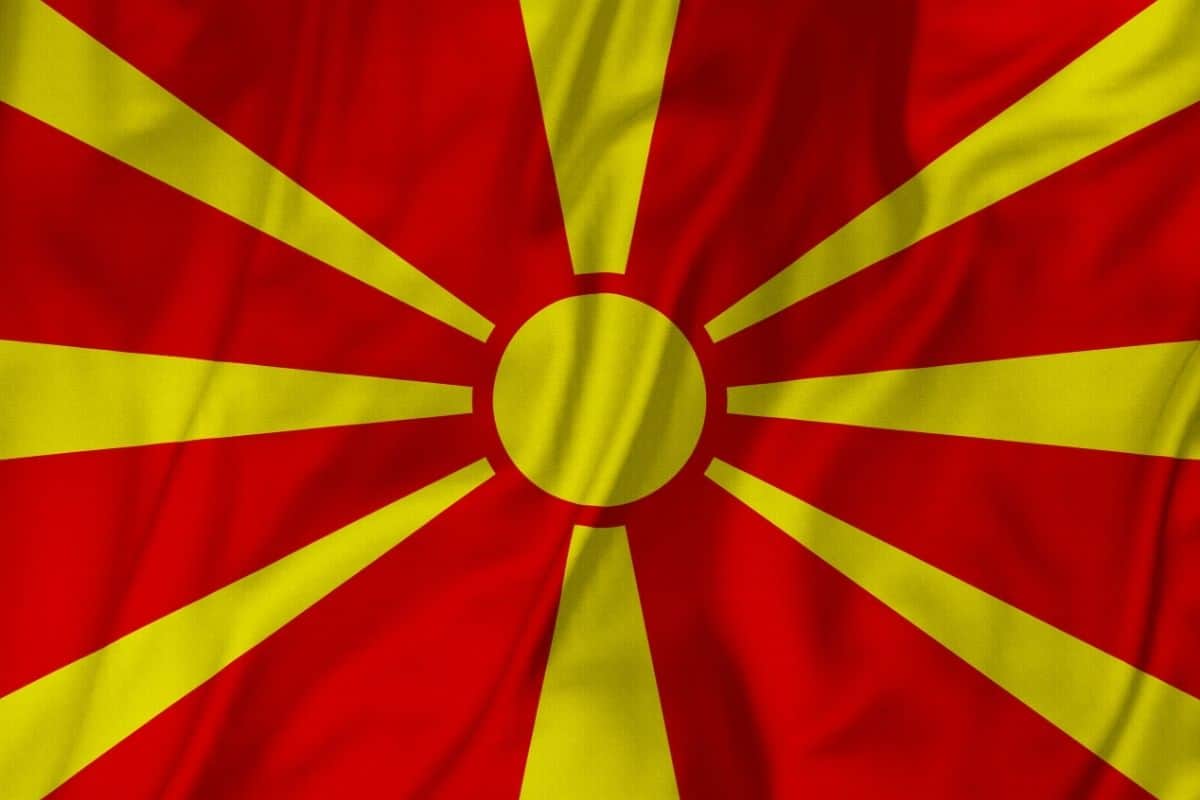
North Macedonia
Red flag with a yellow sun with starburst rays
The flag of North Macedonia features a stylized yellow sun emblem with eight rays in a starburst pattern on a brilliant red background. The nation adopted this modern sun design after disputes with Greece over the Vergina Sun, a star-like sun symbol with 16 triangular rays emanating from an intricate sun circle.
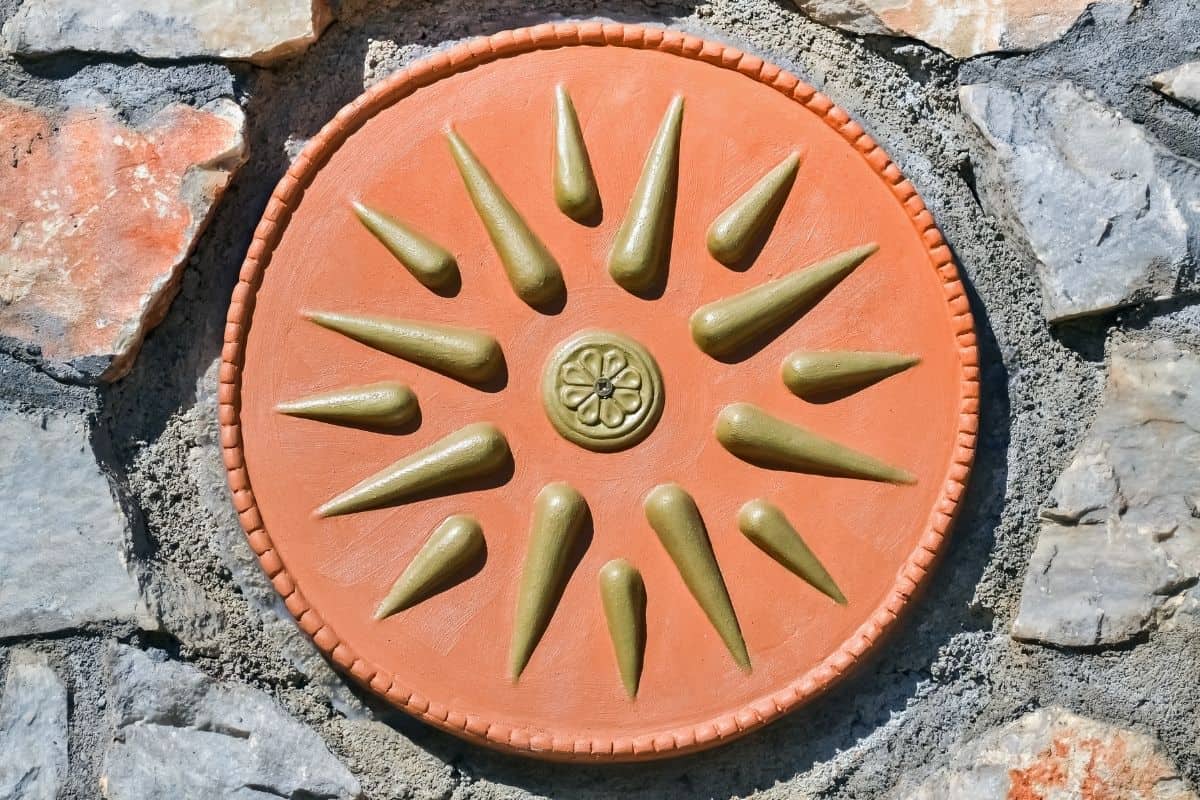
The new sun icon represents the “new sun of liberty” described in North Macedonia’s national anthem upon independence from Yugoslavia in 1991.
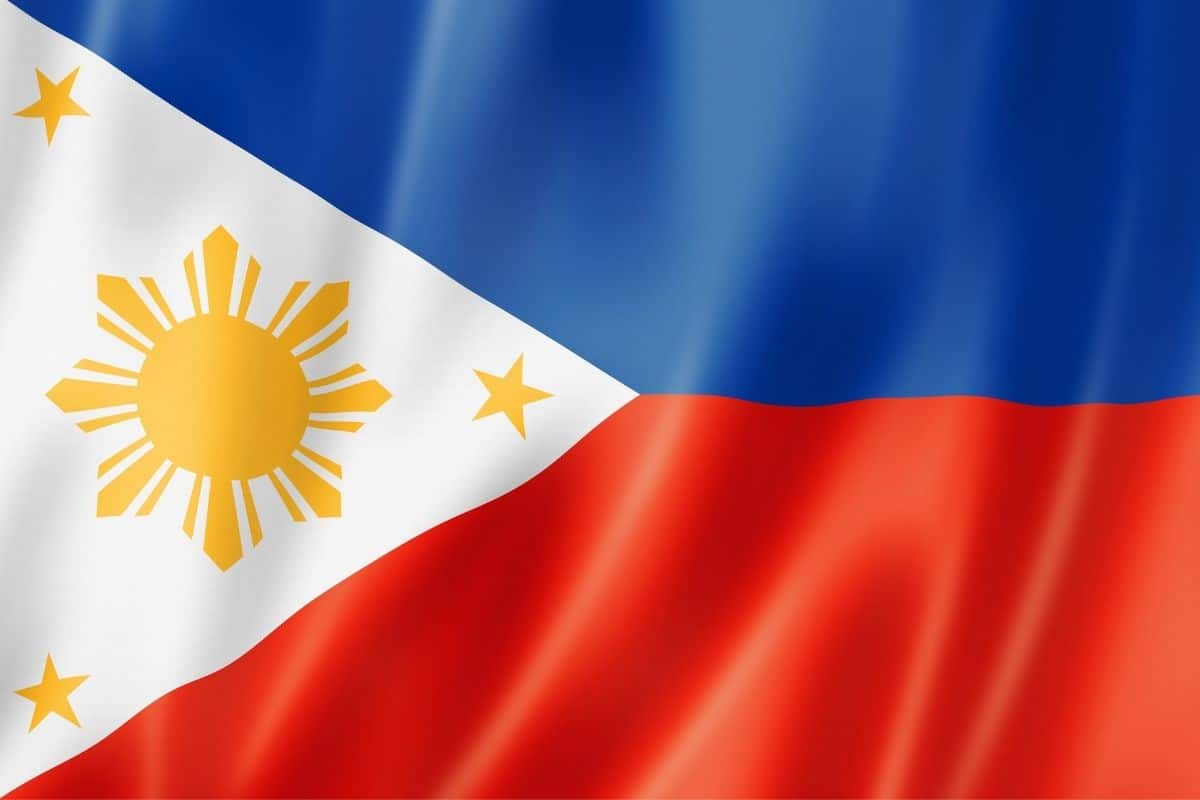
Philippines
Sun in a white triangle next to a red and blue stripe
The Philippine flag incorporates the beloved Rayos del Sol sun emblem with eight rays at the center of a white triangle. Each ray represents one of the first eight provinces that revolted against Spanish colonial rule. Although it uses the most popular shade of red, white, and blue, the Philippines’ flag positions these colors uniquely. The blue and red stripes bisect the banner horizontally while a white triangle pushes into them from the hoist line.

Rwanda
Yellow sun in the top corner of a triband
Rwanda’s current horizontal tricolor flag places a vibrant golden sun with 24 rays in the top blue band opposite the hoist side. Redesigned in 2001, the sun emblem represents the “enlightenment” arising from Rwanda’s continued renewal following the 1994 genocide against the Tutsi. The central yellow band signifies economic development over a green base representing prosperity, capped by a blue color embodying peace and happiness.
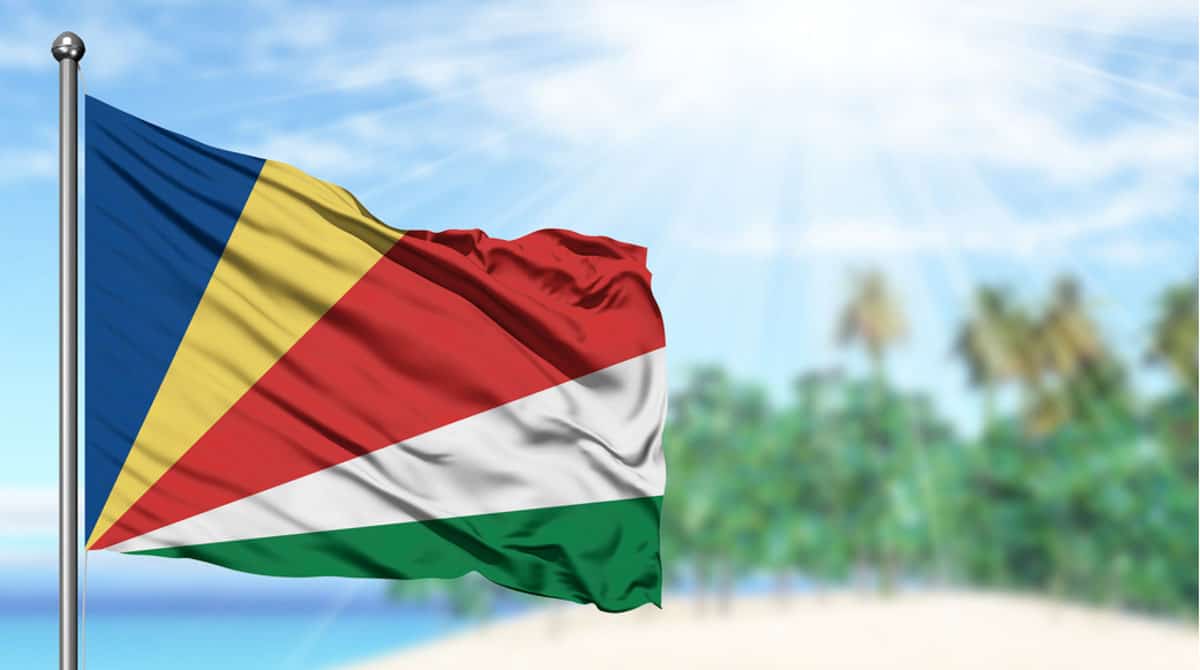
Seychelles
Colorful sunburst of oblique triangles from the bottom corner
The striking Seychelles flag features a vivid sunburst design radiating from the bottom hoist corner in five colored triangles. A wide blue triangle represents the nation’s surrounding ocean, complemented by a golden yellow slice for the blazing sun. The separating red band symbolizes the people’s united determination, flanked by white for social harmony and green for the lush environment. This bold design captures the vibrancy of Seychellois island culture.
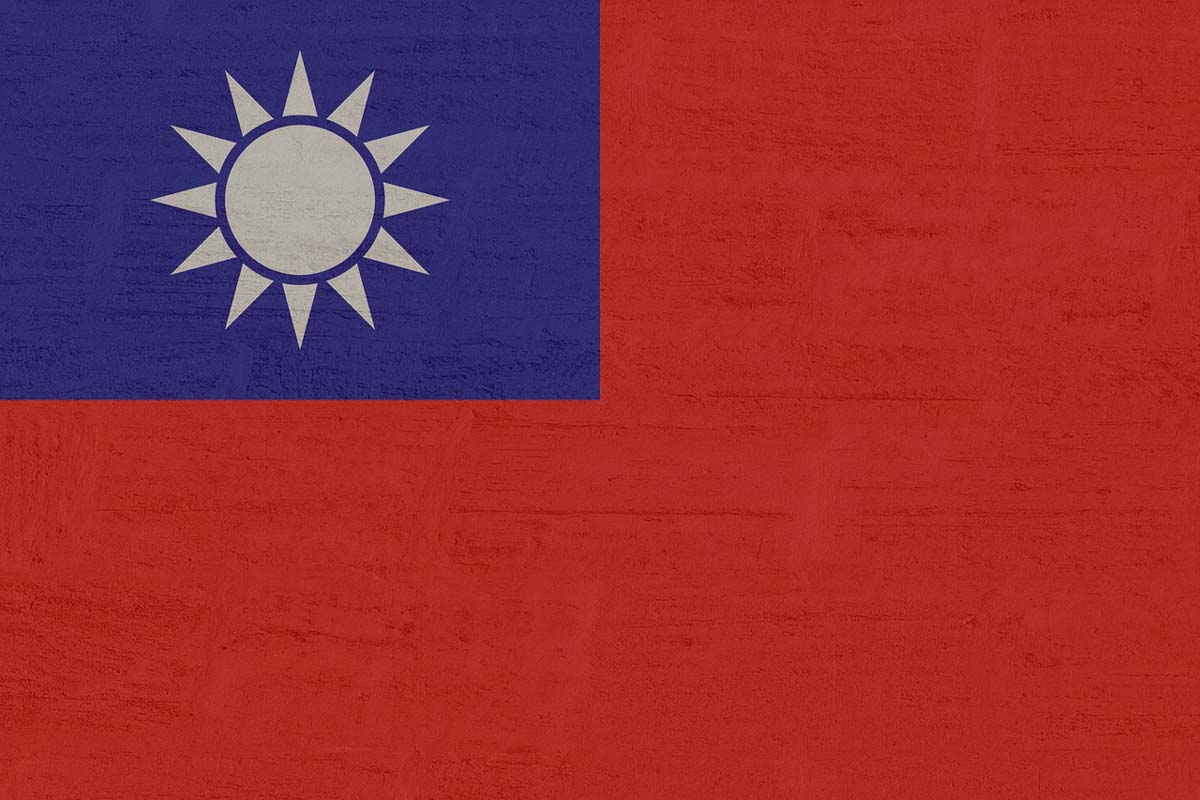
Taiwan
White sun in a blue corner on a red field
The dominant red field on the Taiwanese flag represents the bloodshed that occurred when the Qing Dynasty was overthrown to create the Republic of China in 1911. A white sun emblem, symbolizing national sovereignty and liberty, is placed on a dark blue canton. Its 12 triangular rays signify democracy, equality, and the traditional timekeeping periods of the day and calendar year.
Taiwan’s status as a sovereign nation is a bit complicated. Mainland China sees the island as a renegade territory and wants to bring it back into the fold. Meanwhile, many Taiwan residents desire a separate nation. Flown as the banner of this disputed island territory, the sun motif remains a poignant symbol amidst tensions with mainland China.

Uruguay
Blue and white flag with Sun of May
Uruguay’s flag echoes the broad design of neighboring Argentina, with nine alternating white and blue stripes symbolizing the nation’s original divisions or departments. A white square in the upper hoist quadrant bears the Sun of May emblem, also found on Argentina’s flag. However, the sun’s rays are more abstract than those on the Argentinian flag. The sun icon commemorates both nations’ independence struggles against Spanish colonial rule in the early 19th century.
Frequently Asked Questions About Flags with Suns
Which nations have a sun symbol on their flag? Why do countries choose to feature a sun on their flags? Get questions to these answers and more below!
How many countries have a flag that features a sun?
There are nearly 20 countries with flags that feature a sun. Some of the countries featured in this article include:
- Antigua and Barbuda, with a sun rising above a “V” for victory
- Argentina, with the Sun of May on a white stripe
- Bangladesh, with a red sun on a green flag
- Ecuador, with a sun featured in a coat of arms
- Japan, with a red sun on a white flag
- Kazakhstan, where the yellow sun appears on a turquoise flag
- Kiribati, with a sun rising over gently rolling ocean waves
- North Macedonia, a modern starburst on a bright red background
- Namibia, with a sun in the corner of a blue triangle
- Philippines, a sun and three stars on a white triangle
- Rwanda, with a sun in the corner of its striped flag
- Seychelles, with a bright and colorful sunburst design
- Taiwan, with a silver sun on a blue rectangle in the corner
- Uruguay, with the Sun of May set in the corner of a blue and white striped flag
What does a sun mean on a flag?
While the sun on a flag may represent different things in different countries and cultures, it typically symbolizes light, life, and energy. Suns on flags can also mean hope and the dawning of a new day.
What's the name of the sun on the Argentinian and Uruguayan flags?
Known as the Sun of May, the sun on the flags of Argentina and Uruguay has a face in its center. It is associated with the May Revolution that led to independence from Spain.
Which European country has a sun on its flag?
North Macedonia. And on a continent where flags with stripes, stars, crosses, and crests are prevalent, this sun flag features a bright yellow starburst on an eye-catching red background that really stands out!
What flag is blue and white with a sun?
Both Argentina and Uruguay have blue and white flags with a sun. The Argentinian flag has two light blue and one white stripe with a Sun of May sun symbol in the center. The flag of Uruguay features nine white and lapis blue stripes with a Sun of May sun symbol in the upper left corner.
What flag is red with a yellow sun?
The flag of North Macedonia is red with a bright yellow sun. The sun symbol on the North Macedonian flag starts as a simple circle with rays stretching to its corners.
Which Sun Flags from Around the World Do You Like Best?
What color sun or sun icon appeals most to you? Do you find the history of one of these sun flags particularly fascinating? Have I missed any country that features a sun on its flag? Share your thoughts in the comments section below.
Ready to Go?
Use These Helpful Links to Book Your Trip!
- Find low fares with airfarewatchdog and Skyscanner
- Book your plane ticket with Expedia or Kayak
- Or take the scenic route on an epic road trip in a rental car or an RV from Outdoorsy
- From hotels to private homes, find the perfect accommodation with Hotels.com or Vrbo
- Travel in style with a suitcase, carry-on, backpack, or handbag from eBags
- Save on tickets to attractions, sightseeing tours, and more with CityPASS, Tiqets, and Viator
- Don’t leave home without travel insurance from AXA
- Discover the sights, history, and culture of your destination with an interactive scavenger hunt
- Need something else to plan your perfect trip? Visit my travel resources page for more trusted partners. Happy wandering!
Thank you for sharing!

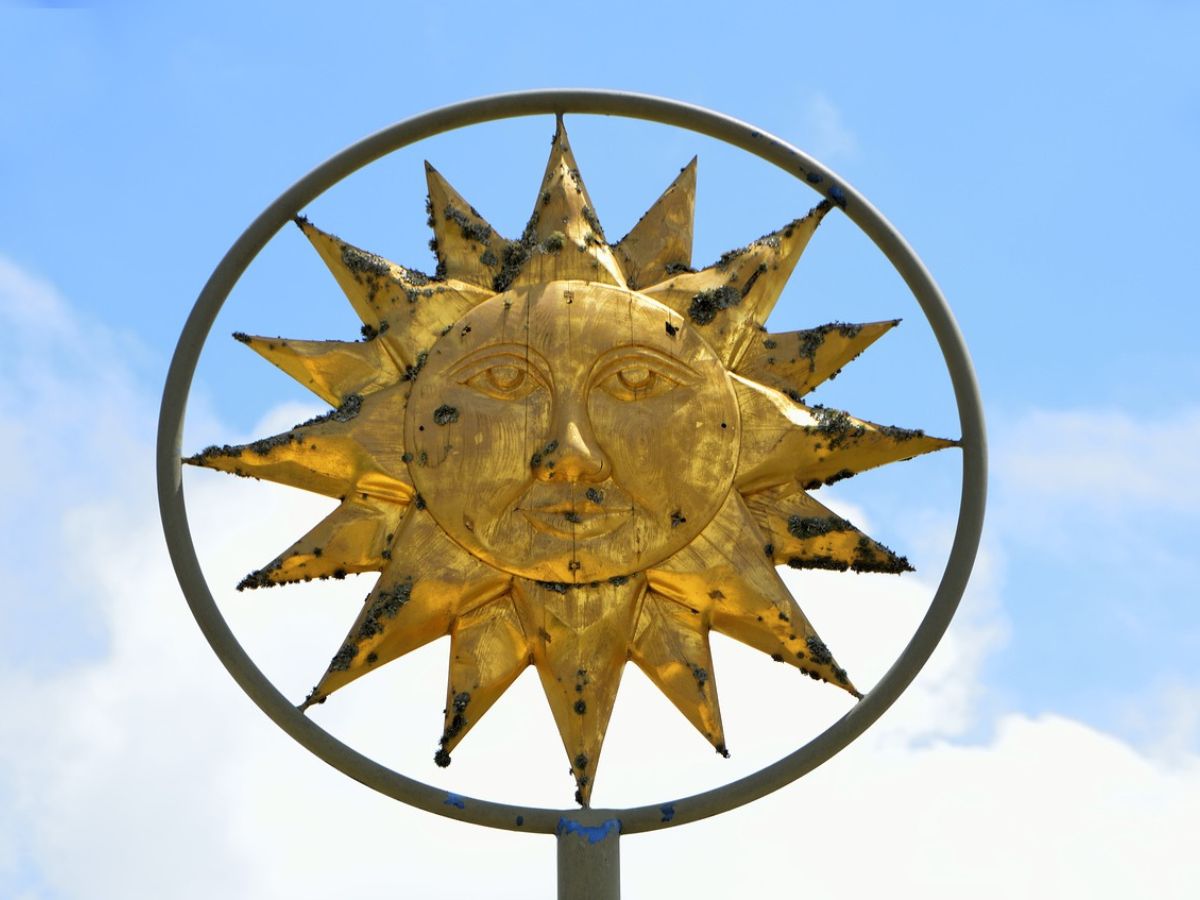


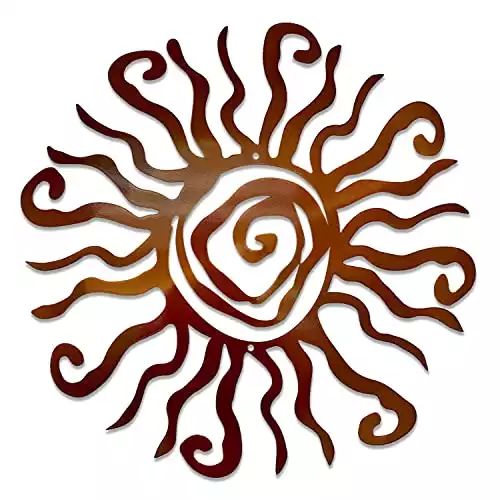
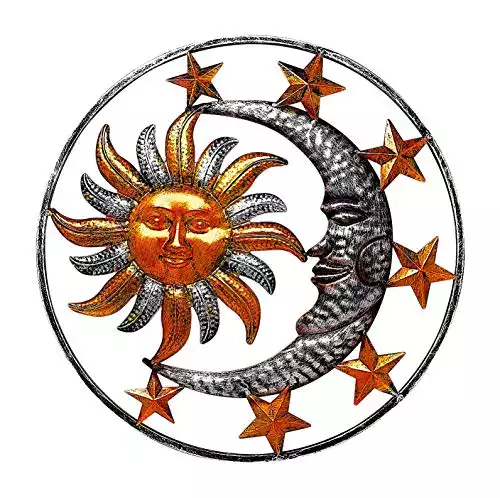
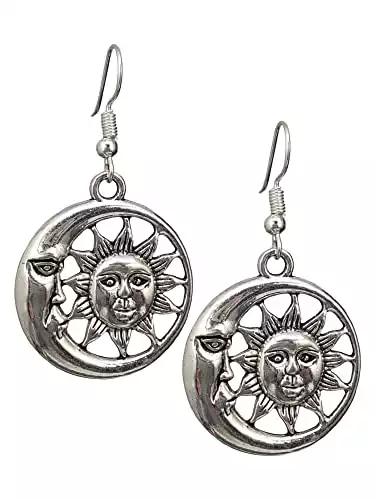



No Macedonian flag (entirely made of the sun)?
It’s there now! Let me know if I’ve done it justice!
Kurdistan’s flag has a sun.
It’s added to the article now. I hope I’ve done it justice!
You’ve shown the Philippine flag with its red band uppermost which occurs when the country is officially at war because the red symbolizes patriotism and valor (but the country isn’t at war). Most of the time it should be flown with the blue field uppermost for peace, truth, and justice. The white equilateral triangle represents liberty, equality, fraternity, and the three golden yellow stars represent the three major island groups (Luzon, Visayas, Mindanao). The golden yellow sun represents unity, freedom, people’s democracy, and sovereignty. The sun’s eight rays stand for the eight provinces that first declared independence from Spain.
Thanks for sharing this beautiful symbolism! (And, I’ve updated the photo of the Philippine flag to be sure to show the blue band on top, because the world needs more peace and less war!)
Wow! This is really interesting! We had no idea about the meaning of the sun in most flags, except for the one on the Japanese flag! Thanks a lot for this thorough research and for sharing it with us!
wow you clearly spent a great deal of time researching for this post! Had no idea that the sun was featured so prominently all around the world. Interesting how they all have different numbers of rays too!
Fascinating blog post, I read a book about Karibati – some memories and your post reminded me on it.
That sounds pretty interesting! What was the book?
This is such a fun idea to write about! I love that you took the time to research all of these – it is so interesting to read. I’m not sure I’ve seen the Rwandan flag before, but I find it really lovely! Thanks for compiling these.
The new Rwanda flag is way cooler than the old one, that’s for sure!
This is a lovely idea for a post! I had never really thought about it, but I guess you are right that the sun is really not featured on most national flags. I think I remember reading somewhere that purple is also very rare on flags, for whatever reason? In any case, I learned a lot by reading your post: for example, I even have an Ecuador flag hung up in my apartment and never realized that the coat of arms has a sun on it! It must’ve been time consuming to gather all the information for this post, but you present it clearly in an interesting way. Kudos!
Oh, I’m so glad you enjoyed it! I never thought about the color purple on national flags until you mentioned it, but you’re right. Beyond the rainbow flag for gay pride (granted, that’s not a national flag), I cannot think of any flags featuring purple. Since purple has long been tied to monarchies, this is even more surprising! Per a quick Google search, it looks like only the Dominican and Nicaraguan flags include purple. And in both cases, it’s not much. For Dominica, it’s part of the parrot in the center of the flag. And for Nicaragua, it’s part of the rainbow in the triangle. So interesting! Thanks for sharing your thoughts!
What an interesting idea for a blog post! As I began reading, I tried to recall the flags with suns on them. Japan immediately popped into my head followed by Uruguay. I didn’t realize there were so many others or all the many meanings behind the symbol!
It’s ironic, right? The most important star to live on earth is the sun, yet it is shadowed by generic stars on national flags.
Yeah, I hadn’t thought of it that way before!
What a fascinating read! I had never considered the meaning behind suns on flags. I was particularly interested in Japan, I had wondered why it was red. It does make complete sense to call themselves the land of the rising sun!
I’m glad you enjoyed it! I still can’t get over how less frequently suns are featured on national flags compared to stars (and stripes).
Super interesting article! While visiting South America I heard so much about the Argentine and Uruguayan flags. Mainly that the Uruguayans were complaining about the similarity of their flags, but said at least their sun is smiling 😀
Oh, that’s funny!
I always find flags really interesting and the symbolism behind them and you’re right, there aren’t that many really with suns. Which is strange in a way seeing as how much we need the sun to live and how powerful an image it can create.
I’m glad I’m not the only person who enjoys the meaning behind flags!